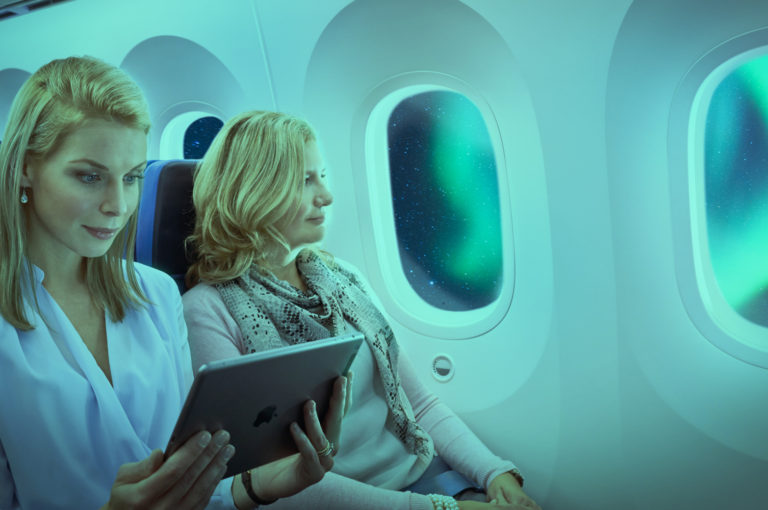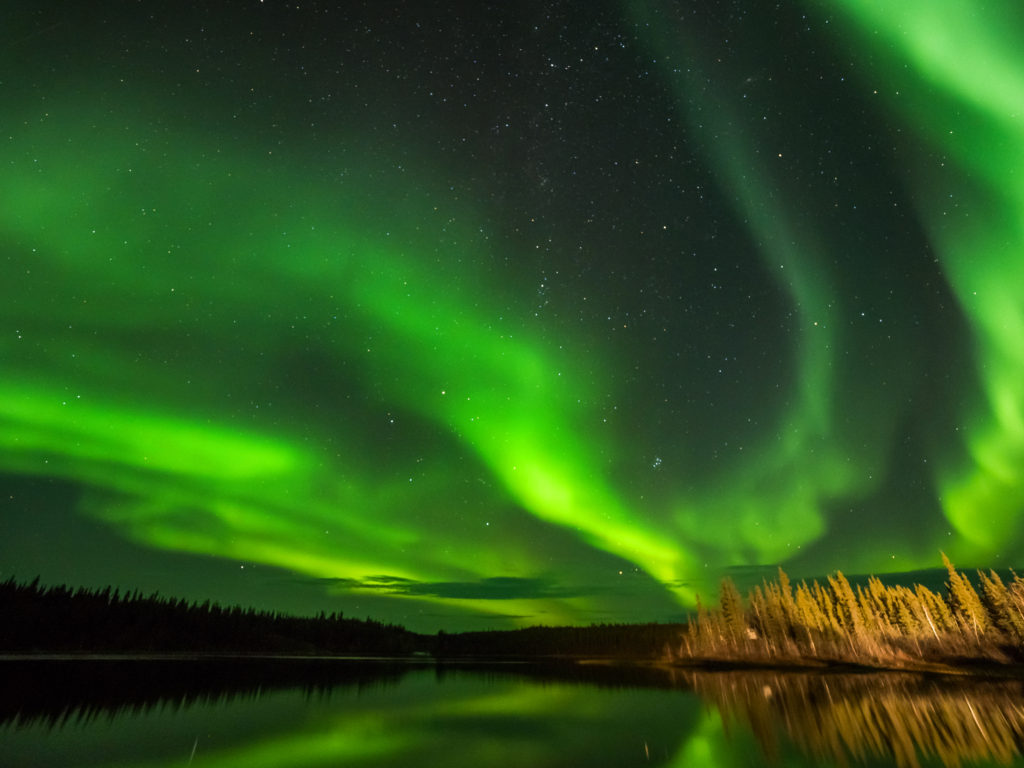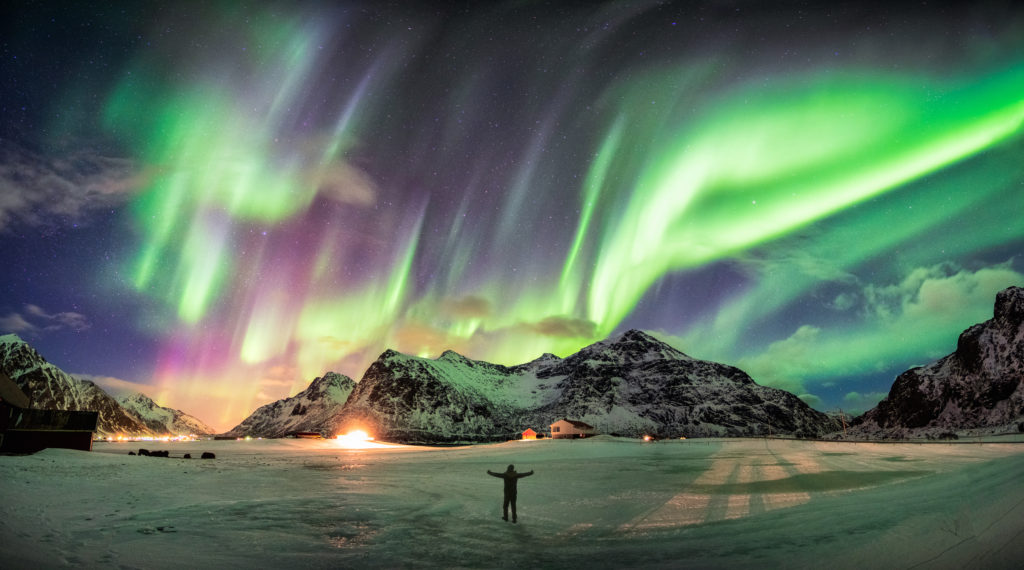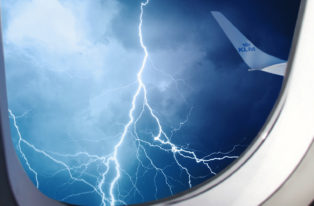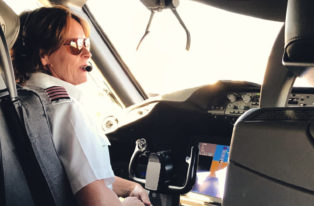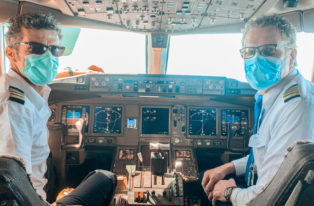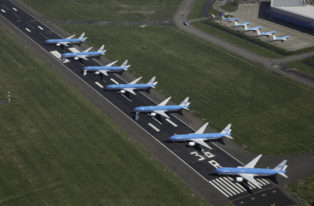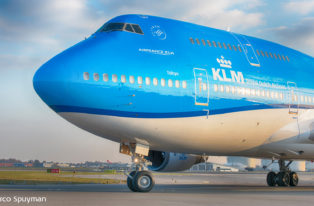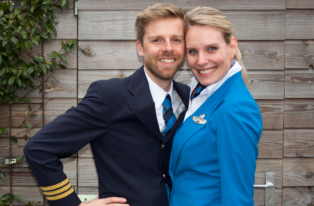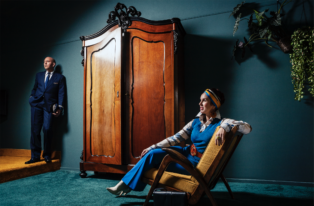How to spot the Northern Lights from your airplane seat
Getting a look at the Northern Lights is on many people’s bucket list. If you want to be sure to experience the Aurora Borealis, you can travel to Iceland or Spitsbergen. But did you know that you can also see it from your airplane window? Working as a cabin attendant, I saw the spectacular light show from the cockpit on a flight from Vancouver to Amsterdam. But what is the Aurora exactly? And which flights afford you the best chance of seeing it?
What are the Northern Lights?
Let’s start with a short lesson in physics. In the past, the magical lights around the earth’s poles were attributed to gods, spirits, and magical creatures. Now we know that the Aurora Borealis – the Latin name for the Northern Lights – has to do with the solar wind.
The sun constantly ejects electrically charged particles into space. The earth’s magnetic fields capture them and draw them to the polar regions. When the particles enter the earth’s atmosphere and collide with specific molecules, energy is released in the form of light. The result is a light show of green, blue, purple, and red. And, did you know that the phenomenon is not only visible at the North Pole, but at the South Pole as well? There we call it Aurora Australis or the Southern Lights.
What are the best conditions for seeing the Northern Lights on an aircraft?
- It has to be dark. In the summer months, the sun does not set over the Arctic Circle, so you won’t be able to see the Aurora. But you will get the chance between September and April. According to several pilots I have spoken to, you have the best chance during the winter months.
- The plane has to fly a northerly route at night. KLM flights from Western Canada – Vancouver, Calgary, and Edmonton – are the best. Also flights from some North American destinations such as San Francisco follow a northern route. And don’t forget Tokyo, for both the outbound and inbound flights.
- On these flights, passengers seated on the left-hand side (except from Tokio to Amsterdam, then the right-hand side) of the aircraft will have the best chance of seeing the lights, as they appear to the north. Of course, a window seat will offer the best view.
- The sky has to be clear. Aircraft at cruising altitude usually fly above the clouds, so there is a good chance that you will fly through clear skies.
- You’ll have a better chance of seeing the Aurora during small phases of the moon or when there is no moon. A bright moon fills the sky with too much light.
- Greater solar activity increases the chance and intensity of light and colour variation. There are special apps that keep track of solar activity and predict the probability of Northern Lights. One good app is My Aurora Forecast & Alerts.
- If you’re not in the mood to stare out the window throughout the flight, just ask the crew to warn you when they spot it. That will let you enjoy a movie without having to worry about missing the show. Very often, pilots will warn the cabin crew when they see the Northern Lights, so they can draw it to the passengers’ attention.
Lucky you
Do all these tips guarantee that you’ll see the Northern Lights? Sadly not. Despite all the scientific knowledge about the Aurora, it is not possible to predict exactly where and when it will appear. I think this unpredictability is part of what makes the phenomenon so special. You have to be a bit lucky as well.
Because we work on the aircraft, we’re just a little bit more likely to spot the Northern Lights. It’s one of the advantages of our profession. After all, we find ourselves above the clouds more often than most people. Some pilots on intercontinental routes see the lights several times a year from the cockpit. But, no matter how many times you see it, it’s always special. Speaking from my own experience, I loved seeing the green waves dancing in the air. Spotting them during a night flight was hypnotising. I can’t wait for my next chance to see the Northern Lights.
Also read five reasons why it’s amazing to fly for KLM Cityhopper.
